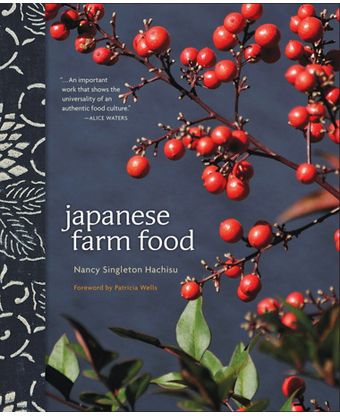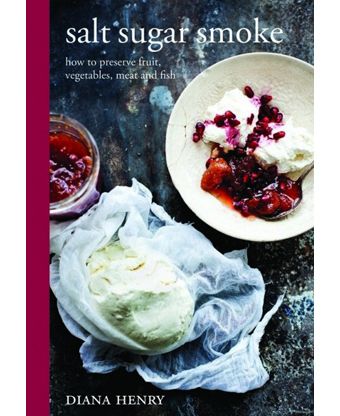Food writing—cookbooks in particular—is about fantasy. It might masquerade as instructional, but it’s not. Like any other fantasy writing, cookbooks are about describing (or fabricating) a universe, and inhabiting it with idealized versions of ourselves. Sometimes the fantasies are grounded in a reality much like our own. Sometimes they meander dreamily into the realm of science fiction.
That’s not to say I don’t love food writing, or cookbooks. I’m a daydreamer. I spend most of my idle hours imagining how cool it would be—how cool I would be—if I cured my own bacon, made my own wine, ate more fish, opened a restaurant, pickled vegetables, learned Portuguese, or lived on a Japanese farm. Cookbooks indulge our fantasies by providing step-by-step directions to achieving the lives we think we want. You too can have your very own subtropical pig ranch or bottle your own medieval mead—all you have to do is follow the instructions! Of course, if we really bought cookbooks for the instructions, we’d all be working on co-op farms in Berkeley. Better to live vicariously, I think.
Most cookbooks are centered around people who have fantasized about similar fantasies to our own, but who have actually gone through the trouble of following through with them. The two cookbooks that the Piglet delivered to my doorstep were each written by a bold, ambitious woman who decided one day that she would live her life in a more primitive way.
Diana Henry’s Salt Sugar Smoke focuses on that most admirable and vital of skills: preservation. She grew up a pickler and a jammer and a potter of meats; a few years ago, she decided to hone those skills and then share them with the fresh-food inclined. Hers would be the house I’d flock to after the apocalypse. Without, gas, power, or running water, I imagine we could still have a good time sitting at her kitchen table, popping open glass jars filled with all manner of sweet, sour, salty goodies, ready to be eaten on the spot or dolloped onto foraged scraps of burnt flesh that the marauding packs of feral hamsters have left behind.
My Japanese friends assure me that the author of the second cookbook has no less than a cult following in Japan. After marrying a Japanese farmer by the name of Tadaaki, Nancy Singleton Hachisu relocated to her husband’s farm in rural Saitama Prefecture. There, they’ve lived for more than two decades, eating what the farm yields, hosting numerous visitors, honoring and reviving farm traditions, and cooking simple Japanese food.
Both books represent fantasies that I’ve had. Not marrying a Japanese farmer, per se, but living on a farm, eating simple food, leaving America for a far-off locale. Or becoming better about making my food last, and not relying on the supermarket for my bacon and jam.
As instructed, I cooked a meal from both books. I won’t trouble you with too many details. Except to say this: I chose a recipe for sweet tea–cured chicken from Salt Sugar Smoke, because I thought sweet tea–cured chicken sounded like something a British writer would concoct to mock the good old U.S. of A. (It didn’t help that she suggested serving it with a “big green salad with ranch dressing.”) I was all ready to lead off my judgment with, “Are you having a laugh, Diana Henry?”
But then that ambassador of all things good, old, and Southern, Sean Brock told me that he brines his fried chicken in sweet tea before serving it at Husk. Plus, I made Henry’s version and it was delicious. International incident averted.
The fact is, both meals were great. The recipes worked without a hitch. But I don’t really feel like it’s fair to judge cookbooks based on meals I cooked from them. What if I were a shitty cook? (I’m not.) What if I chose the recipes out of spite? (I did.) Like I said, cookbooks are about the fantasies they inspire and cultivate, not just the accuracy and utility of their instructions.
Such as it is, I have to make my choice between these two books on my own personal delusions. Again, both lifestyles appeal to me. My inner Bilbo Baggins tingles and squirms at the thought of being able to offer an unexpected guest a jar of potted salmon and a glass of homemade rhubarb schnapps. After returning from a trip to Japan this summer, I wanted desperately to eat more Japanese food, to be able to recreate the deceptively straightforward but unbelievably tasty things I’d eaten. And when it comes down to it, my mind wanders more frequently to dishes like katsudon, grilled yellowtail collar, tempura, and sake-steamed vegetables with miso.
That’s just me. It’s a bit unfair, obviously. If I’d been asked to judge Salt Sugar Smoke against another book about preservation, I’m sure Diana Henry would’ve trampled all over it.
But when I close my eyes to escape whatever it is I’m doing for just a moment, more often than not I find myself thinking, Damn, I wish I were in Japan right now.



29 Comments
"FYI, I made katsudon and sake-steamed squash. On a separate occasion, I also made tamago kake gohan. But what I cook naked, sobbing, alone in the privacy of my own home is my own business. "